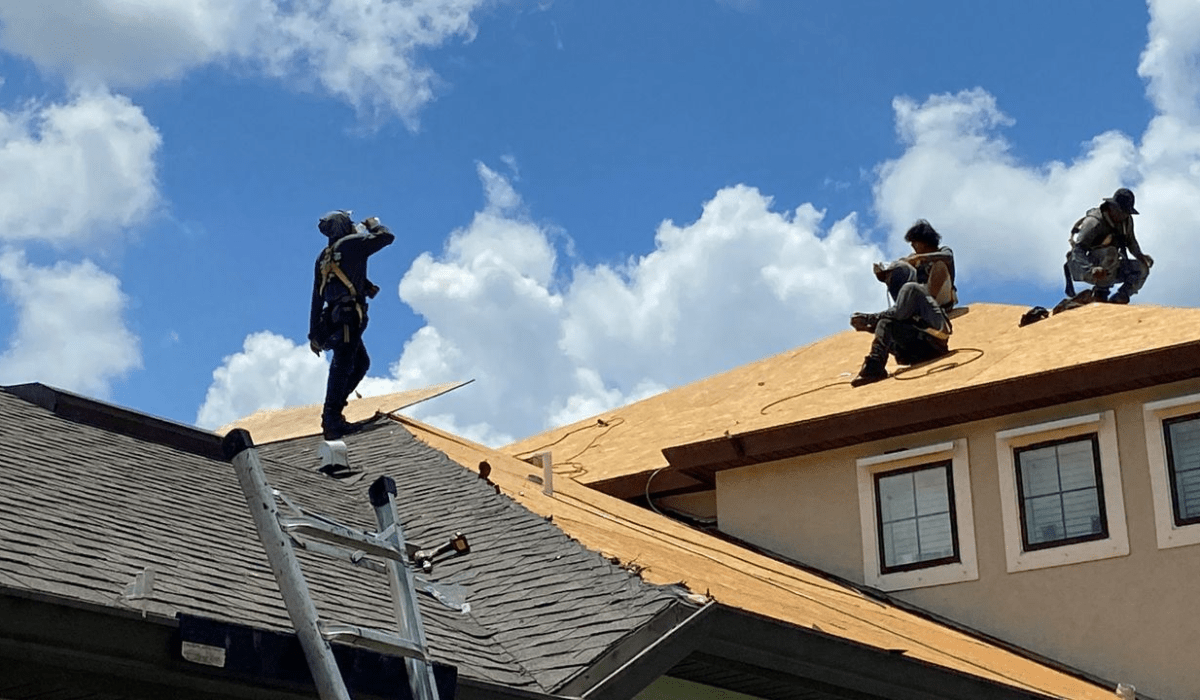The Texas summer is infamous for its relentless heat, scorching sun, and extreme temperatures. During this season, roofs face significant challenges in protecting our homes and keeping us comfortable. In this blog post, we will explore the various ways roofs handle the intense heat and what homeowners can do to ensure their roofs remain resilient throughout the scorching summer months.
Impact of High Temperatures on Roofing Materials
Roofs in Texas are exposed to soaring temperatures, which can have a detrimental impact on various roofing materials. Asphalt shingles, a popular choice for residential roofs, can suffer from thermal expansion and contraction, leading to cracks and curling. Additionally, the sun’s rays can cause the shingles’ surface granules to wear off, reducing their effectiveness in protecting against the elements. Metal roofs, although generally durable, can become extremely hot to the touch, potentially increasing indoor temperatures.
One solution to combat the effects of high temperatures is to choose roofing materials specifically designed for hot climates. Cool roofing materials, like cool asphalt shingles and metal roofing with reflective coatings, can help reduce heat absorption and keep homes cooler during the summer.
Potential Damage from UV Radiation
The Texas sun emits powerful ultraviolet (UV) radiation, which can be harmful not only to our skin but also to our roofs. Prolonged exposure to UV rays can cause roof materials to degrade over time, leading to premature aging and deterioration. UV radiation breaks down the molecular structure of roofing materials, reducing their ability to provide adequate protection against weather elements.
To shield roofs from UV damage, homeowners should consider using UV-resistant roofing materials and coatings. These specialized products can reflect a significant portion of the UV radiation, preventing it from penetrating the roof and causing damage.
Importance of Proper Ventilation
Proper roof ventilation is crucial, especially in hot climates like Texas. During the summer, heat can build up in the attic, potentially reaching temperatures that can warp and damage the roof structure. It can also lead to higher indoor temperatures, putting additional strain on air conditioning systems.
A well-ventilated attic allows hot air to escape, creating a balanced airflow that keeps the roof and the living spaces below cooler. Ridge vents, soffit vents, and attic fans are effective ways to promote proper ventilation and reduce heat buildup in the attic.
Role of Cool Roofing Technologies and Coatings
Cool roofing technologies play a vital role in helping roofs handle the intense heat of a Texas summer. Cool roofing materials are designed to reflect sunlight and emit absorbed solar radiation, which helps keep the roof surface cooler. These materials have higher solar reflectance and thermal emittance, making them more energy-efficient and effective at reducing heat transfer.
Cool roof coatings can also be applied to existing roofs to improve their heat resistance. These reflective coatings can be white or tinted, and they work by reflecting the sun’s rays away from the roof’s surface. By applying cool roof coatings, homeowners can extend the life of their roofs and reduce energy consumption by easing the workload on air conditioning systems.
Surviving the Texas summer requires a robust and heat-resistant roof. The scorching heat, UV radiation, and heat buildup in the attic can take a toll on roofing materials if not adequately addressed. Choosing the right roofing materials, investing in cool roofing technologies, and ensuring proper ventilation are essential steps to help roofs withstand the intense heat.
Contact Blue Angel Roofing and General Contractors today to schedule a roof inspection and learn how you can improve your roof’s heat resistance for the upcoming Texas summer. Don’t let the scorching heat compromise the protection and comfort of your home. Let us help you prepare your roof for the challenges ahead!


